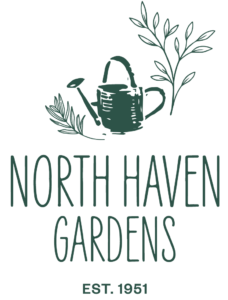Updated:February28,2024 Here at NHG, we know you love pretty blooms that are easy to plant,…
Try Caladiums for Shade in Your Garden
 Few annuals can offer the impacting color impression of caladiums. Their fanciful foliage livens up even the deepest shade with soothing pops of textural interest. They’re tremendously easy to grow; even one tuber added to a shady container planting will send up a summer’s worth of delightfully interesting leaves.
Few annuals can offer the impacting color impression of caladiums. Their fanciful foliage livens up even the deepest shade with soothing pops of textural interest. They’re tremendously easy to grow; even one tuber added to a shady container planting will send up a summer’s worth of delightfully interesting leaves.
We conveniently refer to them as ‘bulbs’ when our huge selection arrives, but caladiums are planted two ways–from the shaggy, warty little tubers they produce (the most economical means) and as actively growing plants, after a grower has raised them in a greenhouse. Either way, they fill a difficult garden niche with gusto and will make you glad you added them to yours.
We bring in thousands of caladium tubers in mid-March and carry them until planting time, which is much later after the weather and soil have warmed. As tropical plants, they thrive in warm soil with excellent drainage, and our chilly wet winter and early spring conditions can cause them to rot.
Why does NHG bring them in so far ahead of planting time?
One word–selection. We can offer you twice the selection of varieties and tuber sizes by offering them early, and remind you each year to hold off on planting.
When Should You Plant Caladiums?
Our rule of thumb is Mother’s Day–around mid-May. Our soil temperatures have typically warmed sufficiently and they’ll hit the ground running. Tubers are best planted in rich soil that’s been well-amended with plenty of organic matter. Excellent drainage–never any standing water–is absolutely necessary.
They appreciate some soil acidity, so amending with Acidified Cotton Burr compost is ideal. They’ll also respond well to additions of bone meal and (a surprise to some) Epsom Salts, which provide trace nutrients they love. Sprinkle a few teaspoons in each planting hole, or if planting a large patch, scatter across the bottom of the planting area and rake into the soil before planting. They’ll reward you with big, vigorous clumps.
One thing you might have heard about is caladium ‘eyes’ on the tubers–these are the sprouts (like eyes on a seed potato) that are often removed. Opinions vary as to the effectiveness of ‘de-eyeing’ your tubers, but most caladium enthusiasts recommend snapping off any sprouting eyes to encourage more eyes to develop when active growth begins, leading to a more full, bushy plant.
What are the Different Types of Caladiums?
At the simplest level, fancy leaf types have a broader leaf and prefer full shade (some sun early in the morning, or dappled sun filtered through shade trees, is usually okay). Strap leaf varieties have a narrower, more pointed leaf, are usually a bit more compact in stature, and can tolerate more sun. We find that some scorching can still occur in the heat of the summer if they’re exposed to hot afternoon sun. For strap leaf varieties, sunrise until about 1 pm works well for sun exposure.
Another detail to consider with your caladium investment is the way the tubers are sold. Like eggs, they’re graded by size. NHG carries #1 grade as the smallest, although smaller #2 and economy grades are sometimes available. #1 grade bulbs are smaller, with fewer eyes. Jumbo is the next size up, and then Mammoth tubers, the largest grade with the most eyes, are sold only by the box. It’s all matter of your desired investment and instant gratification.
Later in the season, as grower availability permits, you’ll find many, many caladiums actively growing in pots from 4″ up to 10″ in the nursery.
These provide more instant gratification and are especially suitable for popping into containers for an immediate punch of color and interest.
Favorite varieties sell out quickly.
Plan to shop early! Severe weather in Florida, and other areas where these tubers are raised, has caused major shortages on supply this year. Visit soon and speak with a garden advisor for more details on the benefits of bringing caladiums into your shady garden and landscape.
For more ideas for shady areas, check out our Pinterest board on shade gardens.
Read more about shade gardening: 3 Tips for Shade Garden Success


